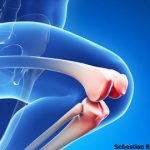By collecting more data, Dr. McLawhorn says he hopes to accelerate understanding of risk stratification, infection prevention and treatment, and implant designs to improve patient outcomes after knee revision surgery.
Risk Stratification
Increased focus on risk stratification involves identifying modifiable preoperative characteristics, such as diabetes control, preoperative weight loss (surgical and non-surgical) and smoking cessation. All these potential risk factors can be optimized to improve the likelihood of a successful total knee replacement.
“Optimizing patient management through the perioperative period is critical for those conditions, which can’t be modified prior to surgery,” Dr. McLawhorn says. “For instance, we have a better understanding of how to manage medications for inflammatory arthritis around the time of total knee replacement so we minimize the likelihood of disease flare and risk for medication-related complications, such as delayed wound healing and infection. Optimization for primary total knee [arthroplasty] will hopefully curtail the rate of growth in revision total knee [arthroplasty].”
Dr. Keroack says, “Weight loss and smoking cessation have been shown to improve the effectiveness of disease-modifying anti-rheumatic drugs—especially biologic response modifiers—for patients with rheumatoid arthritis. Orthopedists and rheumatologists should view total knee replacement surgery as an opportunity to change patient habits and behavior. Additionally, a major surgical intervention requires careful scrutiny of all the patient’s medical issues. This careful pause-and-review strategy gives us a chance to make therapeutic changes that will benefit the patient over the long term.”
With respect to osteoarthritis, the most common reason for a knee replacement, Dr. Keroack says weight is among the primary causes of the illness, and weight loss is critical for implant health and longevity. “We hope that behavior modification in the preoperative period translates into long-term success,” he says.
As far as other preoperative characteristics that could be optimized for these patients, Dr. Keroack says a thorough oral examination to assess a patient’s dental health is important. Gingivitis and chronic dental caries, which are potential sources of infection, should be addressed prior to joint replacement or revision. Examination of cardiovascular health, including auscultation and peripheral pulse assessments, as well as coordination of a thorough medical records review from a primary care physician, are critical to uncover occult surgical risks. Examination of skin integrity and diligently searching for ulcers, as well as a neurologic assessment for peripheral neuropathy, which increases the risk for skin breakdown, will help identify additional risks for infection.
Infection Prevention & Treatment
Preventing infection is paramount for preventing re-operation after primary and revision total knee replacement surgery. Current research is focused on preoperative and perioperative processes to reduce the incidence of surgical site infection. Research being performed at HSS and other partner hospitals is assessing ways to minimize the morbidity associated with treating periprosthetic joint infection.6

